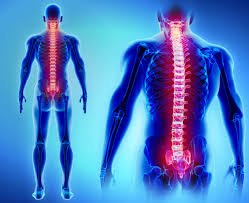Types of Spinal Cord Injuries
Help from a Los Angeles Spinal Cord Injury Attorney
Each year, spinal cord injuries leave people with catastrophic repercussions for the victims and their families. The aftermath of a spinal cord injury is never easy to deal with, as it involves pain and suffering, lost wages from missed days of work, extensive medical bills, and so much more. Victims who are injured are left with these huge burdens, leaving them unsure of what to do next. Spinal cord injuries can be debilitating and leave victims with lifelong injuries, such as paralysis, and much more. If you or someone you know sustained a spinal cord injury, it is in your best interest to seek legal help from a Los Angeles spinal cord injury lawyer. A spinal cord injury lawyer Los Angeles will help you every step of the way. In this article, you will learn about the types of spinal cord injuries so you have a thorough understanding of the diagnosis process and treatment. Many people are unaware of the fact that the spinal cord is divided into four different regions. Here are the four spinal cord regions:
- Cervical spinal cord: The cervical spinal cord if the uppermost region of the spinal cord, where the brain connects to the spinal cord and the neck connects to the back. There are eight vertebrae in this region, which are commonly referred to as C1 through C-8. C1 is the highest vertebra and C8 is the lowest.
- Thoracic spinal cord: The thoracic spinal cord is the middle section of the spinal cord, which contains 12 vertebrae that are numbered T1-T12.
- Lumbar spinal cord: The lumbar spinal cord is the lower region of the spinal cord, which is where the spinal cord is able to bend. There are five lumbar vertebrae, which are numbered L1-L5.
- Sacral spine: The sacral spine is the lower, triangle-shaped part of the spine, which has five vertebrae. The spinal cord is actually not in this section, but it is made up of nerve roots that exit the spine.
Additionally, there is the coccygeal region, which is also referred to as the tailbone. This is a single vertebra, which is the base of the spinal cord.
Now that you have a better understanding of the spinal cord regions, you will learn about the types of spinal cord injuries that a victim can sustain.
Types of Spinal Cord Injuries
Spinal cord injuries are divided into two general categories, which are incomplete and complete. Incomplete spinal cord injuries involves the spinal cord to be only partially severed. When a spinal cord is partially severed, the injured person is able to function a bit still. When it comes to incomplete injuries, the extent of the injuries depends on the degree in which one is able to function. As for complete spinal cord injuries, this involves the spinal cord to be completely severed, which then eliminates the function. However, with consistent treatment and physical therapy, there is a possibility that the victim can regain some function.
Here are some of the most common types of incomplete spinal cord injuries:
- Anterior spinal cord injuries: This type of injury affects the front of the spinal cord and damages motor and sensory pathways of the spinal cord.
- Central cord syndrome: This type of injury affects the center of the spinal cord, and damages the nerves that carry signals from the brain to the spinal cord.
- Brown-Sequard syndrome: This type of injury affects one side of the spinal cord, and as a result, affects one side of the body more than the other. However, the extent of this injury varies from victim to victim.
Here are some of the most common types of complete spinal cord injuries:
- Tetraplegia: This type of injury results in paralysis of all limbs, which is also known as quadriplegia. This results in the inability to control bladder and bowel movements, respiration, and other routine functions. Each case varies depending on the case and where the injury took place on the spine.
- Paraplegia: This type of injury affects sensation and mobility of the lower half of the body, including the legs.
- Triplegia: This type of injury affects sensation and mobility of one arm and both legs.
If you or a loved one has suffered a spinal cord injury due to the fault of another, you or your loved one may be entitled to compensation for your losses. By contacting a Los Angeles spinal cord injury attorney, we will be able to obtain financial compensation and justice for your pain and suffering, lost wages, medical expenses, and more. Call us for a free consultation with a Los Angeles personal injury attorney today!
